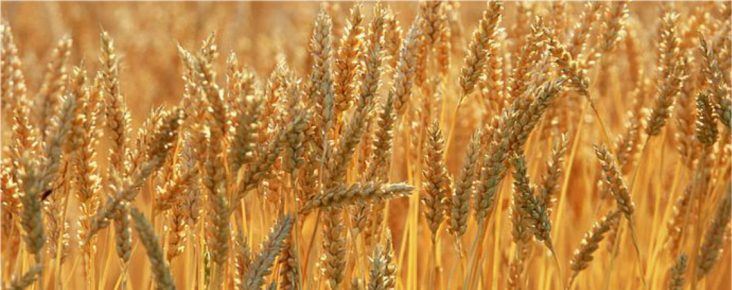Wheat prices fall tightening farmers’ profit margins
by September 16, 2021 2:53 pm 942 views

Wheat prices had been doing well, but in recent weeks prices have drastically fallen and it could impact farmers’ profit margins. After reaching a $7.48 per bushel high in mid-August, the July wheat futures market fell to below $7 last week, and the outlook for the commodity’s profit margin is mixed at best.
Scott Stiles, extension economist for the University of Arkansas System Division of Agriculture, said increases in input costs, such as fuel, seed and fertilizer, are off-setting much of the increased revenue from higher wheat prices. Variable costs for the 2022 crop are projected to be near $334 per acre—up almost $85 per acre from last year.
“I hope growers were watching closely and locked in prices above $7,” Stiles said. “There was a stretch from the end of July until about Sept. 7 they could do that. Unfortunately, as we get closer to planting, the July 2022 futures prices have dropped about 65 cents from the mid-August peak.”
As of Friday morning, futures prices were trading at $6.83. Stiles said the basis for June/July delivery in 2022 currently ranges from zero to 30-cents under the futures price, depending on where growers will deliver their harvested wheat for sale.
“At this point, some growers may be looking at booking prices in the range of $6.80 to $6.50,” he said.
Stiles said increases in fertilizer prices have had the greatest impact on wheat profitability, with per-ton prices for urea having increased 60% over the past year, and potash prices having increased more than 90% during the same period.
“Prices for all the major fertilizers increased again last week, as Hurricane Ida impacted some nitrogen fertilizer production and caused logistical challenges such as river navigation,” he said.
Stiles said agriculture experts are anticipating higher seed costs and higher fuel costs, relative to last year. New York Mercantile Exchange diesel futures have nearly doubled over the past year, with nearby futures currently trading at $2.14 per gallon, compared to $1.08 a year ago.
“Returns — excluding government payments — will vary for producers, depending on a number of factors,” he said. The price currently used for assumptions in the 2022 wheat budget is $6.80/bushel. Projected returns above variable costs are $142 per acre, assuming a 70 bushel per acre yield.
“Our projected returns in the budget do not include any land rent,” Stiles said. “The $142 return over variable costs is assuming the operator either owns the land or will have to cover land cost from those returns. Typically, producers are paying a 20-25 percent share rent, or even 30 percent in some areas.
“On a 20% share, the returns over variable costs drop to $47 per acre,” he said. “On a 25% share rent, the returns drop further to $23 per acre. For the growers looking at a $6.50 net price, these returns are even tighter. Each grower has to evaluate wheat through his own lens,” he said.
“At the current price for wheat, which is historically high, I wish I could be more optimistic,” Stiles said. “But the sharp increase in key inputs over the past year has really taken a bite out of potential profits.”
Winter wheat is planted in the fall and harvested in the spring. This type of wheat is typically used in all-purpose, cake and pastry flours. If harvested on time, a winter wheat field can be turned around into a late spring soybean field, meaning two crops can be harvested in one year from one field.
Arkansas growers planted significantly more winter wheat in 2021, increasing acreage from about 145,000 acres in 2020 to 220,000 acres. NASS forecast that 155,000 acres of wheat will likely be harvested this year, more than double the 75,000 acres harvested in the state in 2020. Nationally, winter wheat acreage increased by 10%, from about 30.4 million acres in 2020 to about 33.7 million acres in 2021.
